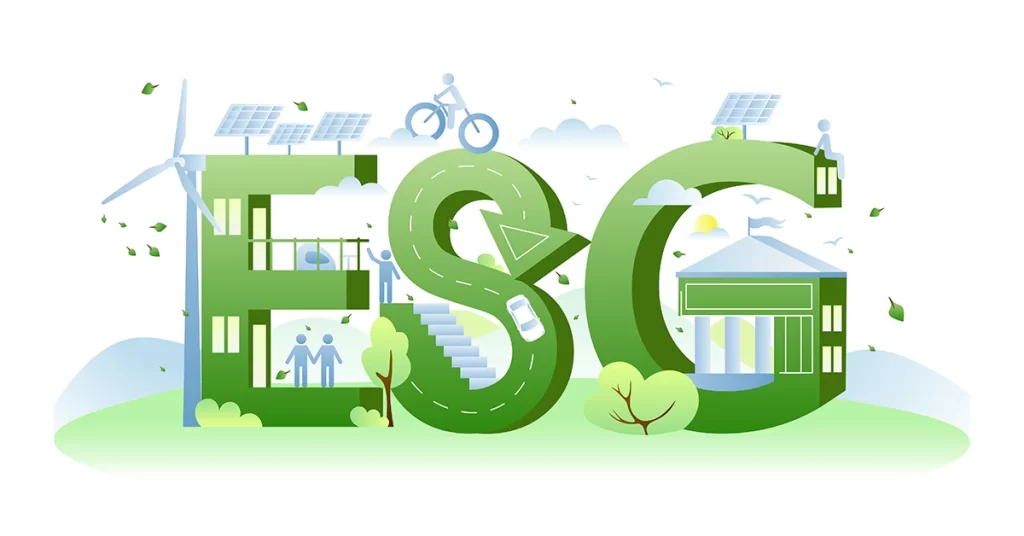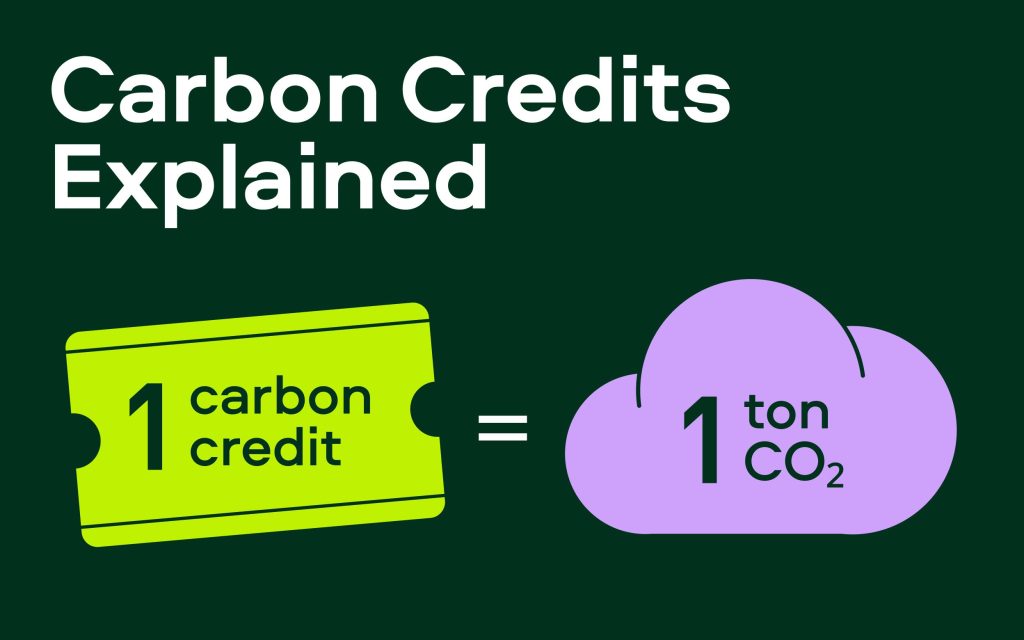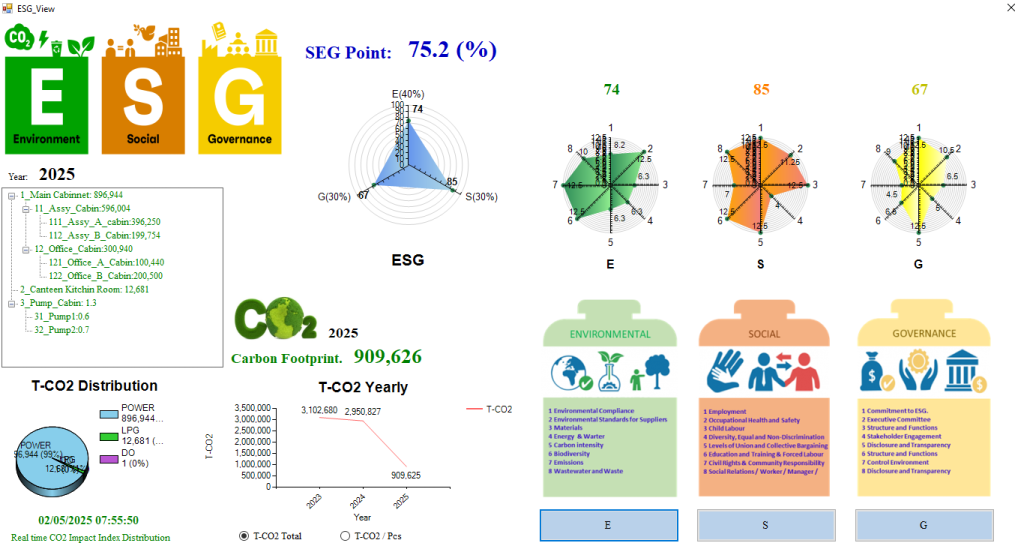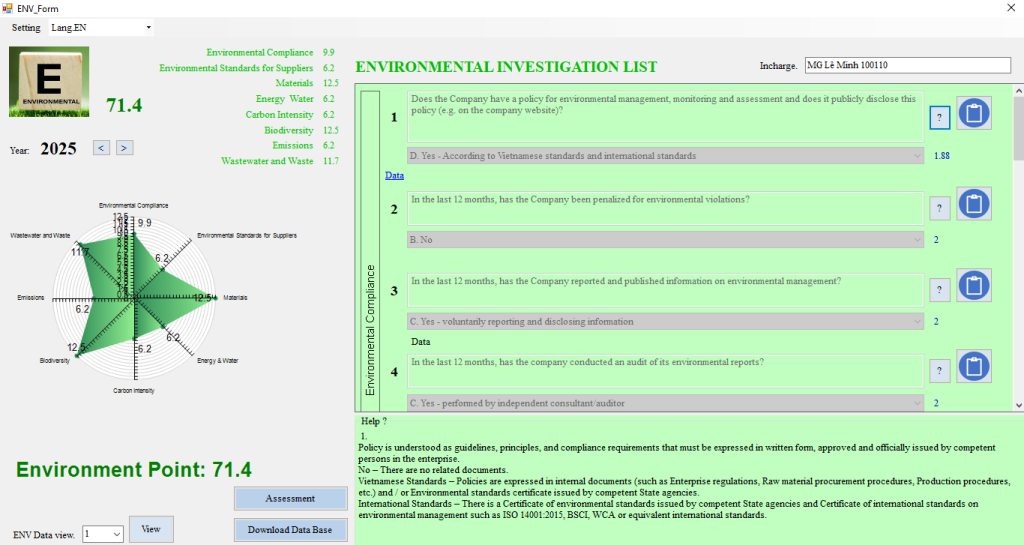with become to GREEN PARTNER
Through activities to make data about the company’s production and business environment transparent.
Through activities to make data about the company’s production and business environment transparent.
E (Environmental): Assess issues related to the business’s impact on the living environment, such as greenhouse gas emissions, water and waste management, raw material supply, impacts from climate change, etc.
S (Social): Assess issues related to diversity, equity and inclusion of the business internally and with stakeholders, such as labor management, data security and privacy, community relations, etc.
G (Governance): Assess issues related to corporate governance, business ethics, intellectual property protection, compliance with legal regulations, etc.
E.S.G is not only a trend but also a decisive factor for the success and sustainable development of Enterprises in the future. The benefits of E.S.G practice for enterprises can be listed as:
Attractive to investors. E.S.G practice is changing the way Enterprises are valued and the attractiveness of Enterprises in the eyes of investors. E.S.G helps investors have a comprehensive view of the business operations of enterprises, not just relying on traditional financial indicators. Through E.S.G indicators, investors can choose businesses with sustainable E.S.G business strategies, contributing to solving global environmental and social problems, and creating long-term value for shareholders.

Enhancing the reputation of the Enterprise, increasing the sympathy of customers, employees and stakeholders. Consumers are increasingly interested in products and services created by sustainable development models. Reduce legal, financial, reputational and security risks Improve operational efficiency, reduce costs and save resources
Exploit new opportunities in markets, products and services
Contribute positively to society and the environment
According to PwC’s survey in the E.S.G Readiness Report in Vietnam 2024, among the main factors motivating organizations to implement E.S.G commitments, the top 2 Factors are to improve brand image, reputation and maintain competitiveness in the market.

Background for the need for decarbonization management.
This global warming phenomenon is being significantly affected by CO2 emissions from industrial activities and energy production, and society is calling for the realization of a sustainable economy through decarbonization management, while aiming at the use of limited natural resources and protecting the global environment.
What is non-carbon management?
Non-carbon management is corporate management that incorporates a view of climate change responses (i.e., decarbonization)
Traditionally, corporate climate change responses have been undertaken only as part of CSR activities, but in recent years, more and more companies, especially large companies, have viewed climate change responses as an important management issue and are addressing them company-wide.
CO2 Reduction Initiative
Significantly reduce CO2, one of the causes of climate change!
1- Greenhouse Gas Inventory.
Enterprises need to carry out greenhouse gas inventory activities from energy sources being used to carry out production and business activities. Convert energy consumption activities to CO2 greenhouse gas emission coefficient (t-CO2e) according to Decree 06/2022/ND-CP VIETNAM.
Method.
1- Self-inventory, Energy Audit.
2- Hire an Energy Audit service provider.
HVDNA supports Enterprises in self-auditing energy based on energy consumption activities. From there, Enterprises have a database of production and business activities that impact the environment. Self-auditing helps Enterprises recognize problems in how to use energy resources properly and effectively. From there, there are practical actions to effectively reduce energy.
2- Carbon Reduction Strategy Planning.
From energy audit activities, Enterprises plan strategies to minimize environmental impacts through effective autonomous improvement activities.
2.1- Install energy monitoring devices, track, measure, check…
2.2- Promote improvement activities to increase equipment efficiency, prevent energy waste…
2.3- Install renewable energy systems (Solar power, Regeneration of heat collected from furnaces…)
2.4- Visualize environmental activities through Carbon Credits collected from improvement activities.
3- Carbon Credits.
A Carbon Credit is a tradable certificate that represents the right to emit greenhouse gases, specifically CO2. It represents the right to release one ton of CO2 or another greenhouse gas equivalent to 1 ton of CO2 (t-CO2e) into the atmosphere.
HVDNA implements digitization solutions using IoT applications, measuring energy and then converted to t-CO2e coefficients for management.
Energy consumption reduction improvement activities are reflected practically, visually, and publicly through the monitoring and measurement system.
Results: Emission reduction = Emissions before the project – Emissions after the project
The difference in t-CO2e from the improvement results is converted to “CARBON CREDITS”.
Buying Carbon credits is also an activity to reduce environmental impact. However, this action is the final step of improvement activities to bring net emissions to “Zezo”


4- Visualize environmental performance through “Carbon Footprint”.
Manage and monitor real-time energy consumption through the Smart_IoT energy management software solution, helping Enterprises easily track and trace “Carbon Footprint” in a public and transparent manner. Production and business activities also build prestige and customer trust. Affirming the commitment of Enterprises in accompanying the protection of the ecological environment associated with sustainable production and business.


Phone. 0984. 58. 6116
Email. [email protected]